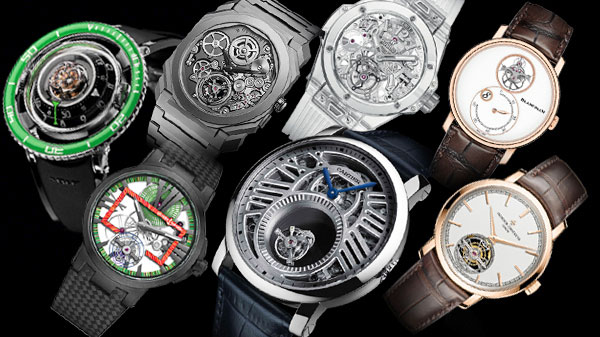The tourbillon is treasured by all true haute horlogerie aficionados – and with good reason. More than merely beguiling to observe in motion, this complex kinetic movement represents the culmination of centuries of chronographical evolution.

For the uninitiated, these mechanisms, true pinnacles of precision engineering, house the escapement and balance wheel – the all-important ticking bits – in a continuously rotating cage. Its carefully-controlled gyration counteracts the effects of gravity, consistently correcting any positional errors and delivering the ultimate in chronographical accuracy.
While less essential for wristwatches, it transformed the reliability of vertically-worn pocket watches. Abraham-Louis Breguet, the founder of Breguet, created the first tourbillon way back in 1795. It’s an impressive achievement, especially when considering that so complex was its construction that up until 1970, less than 1,000 tourbillons had ever been made.

More recently, 21st century technology has upped the production level a little, with more than 3,000 new tourbillons going into circulation every year. Despite that, there remains something particularly alluring about each additional iteration…
Given its unique connection to all things tourbillon, it’s no surprise that Breguet remains the true master of this particular complication, with its brilliantly-designed, nautically-styled Marine Équation Marchante 5887 (featured in our story on perpetual calendar watches here) a more than apt testament to that.

Similarly enchanting is Vacheron Constantin’s Traditionnelle Tourbillon, which showcases minimalist timepiece tech at its very finest. Featuring the debut of the marque’s 2160 self-winding calibre, the tourbillon takes place of pride at the 6 o’clock spot. An opaline-silver dial, replete with pink gold hour markers, hands and bezel, complete its singularly stylish look.
While seemingly more simplistic, Blancpain’s new Villeret Tourbillon Volant Heure Sautante Minute Rétrograde actually features a truly stunning flying tourbillon movement, while its understated dial also boasts the renowned marque’s first-ever jump hours and retrograde minutes complications. Available in an attractive red gold case, a limited-edition platinum version is also on offer.

Arguably pushing boundaries further is Bulgari’s astonishing Octo Finissimo Tourbillon Automatic, the winner of three watchmaking records – world’s thinnest watch, the thinnest-ever automatic tourbillon and the thinnest tourbillon overall. While just 3.95mm deep, it has skimped on nothing in terms of sophistication.

Cartier’s latest offering meanwhile is its Rotonde de Cartier Skeleton Mysterious Double Tourbillon. Its pre-eminent asset is a superb double tourbillon mechanism, which seemingly hovers unsupported at the very centre of the watch’s open-worked dial. With a stark, skeletonised face punctuated only by Roman numeric indicators, this is a true fusion of artistic finesse and precision design.

Hublot, too, has opted for see-through sophistication, the hallmark of its new Big Bang Sapphire Tourbillon. Indeed, every element of this unusually transparent timepiece is laid bare – from its mesmerising mechanism, right down to its semi-clad straps. While the standard model sees its skeletonised movement captured within a sapphire crystal case, its premium incarnation boasts the addition of 48 baguette-cut diamonds.

Eschewing such non-opaque affectations though, MB&F turned to matters maritime to find inspiration for the platinum iteration of its HM7 Aquapod. Its every design conceit has drawn from that deep sea denizen, the jellyfish – from its radially symmetrical structure to its flying tourbillon-housing dome. The movement, the winding rotor and the hour and minute numerals all have the kind of lingering luminescence essential for deep-down nautical navigation.

Arguably, though, it’s Ulysse Nardin that has taken the up-teched tourbillon to a galaxy far, far away with its Executive Skeleton Tourbillon Hyperspace said to be inspired by Star Wars’ Millennium Falcon. The watch features a ‘hyperdrive’ flying tourbillon set above an open-worked dial.
So, then, nearly two centuries after first being acclaimed as the true high watermark of the watchmakers’ art, tourbillons continue to beguile and bemuse in equal parts, and remain much admired and sought out, an outcome that would have, no doubt, delighted Abraham-Louis, that most consummate of complication masters.
Text: Tenzing Thondup



